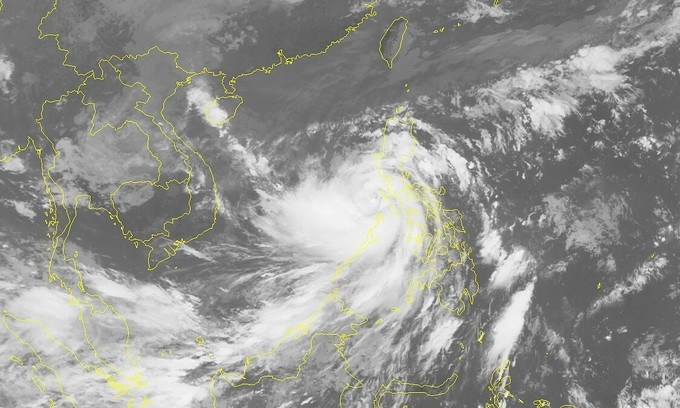The storm was located 212 kilometers northeast of Song Tu Tay Island in Vietnam’s Truong Sa (Spratly) archipelago as of 8:00 am on Tuesday, according to Mai Van Khiem, director of the National Center for Hydro-meteorological Forecasting.
Average wind speed was at 135-165km per hour and gusts at up to 220km an hour.
Molave will travel northwest in the next 24 hours and will have been in the maritime area off the localities from central Da Nang City to south-central Phu Yen Province by 7:00 am on Wednesday.
Wind speed will slightly decrease to 135-150km per hour and gusts at up to 200km an hour.
The typhoon will make landfall between Da Nang and Phu Yen later the same day, before weakening into a tropical depression.
“This is the strongest storm to impact Vietnam so far this year, unleashing extremely strong winds and resulting in huge waves at sea,” Khiem stated.
Powerful winds will start hitting the coastal areas from north-central Quang Tri Province to south-central Binh Thuan Province from Tuesday afternoon.

Strong gusts will hit in the mainland in central provinces from Tuesday night.
The storm will bring a torrential rainfall of 200-400 millimeters to the localities between north-central Thua Thien-Hue Province and south-central Phu Yen Province from October 27 to 29.
Along the coastline from Da Nang to Phu Yen, waves will be up to eight meters high, while sea level will rise by up to one meter, inundating several coastal areas.
Rainfall will be down at 100-200 millimeters in the Central Highlands during this period.
From October 29 to 31, extreme downpours at 500-700 millimeters will batter north-central Nghe An, Ha Tinh, and Quang Binh Provinces.
Precipitation will hit 200-400 millimeters in north-central Quang Tri Province during this period.
Vietnamese authorities have been preparing to evacuate nearly 1.3 million people as it braces for the impact of Typhoon Molave.
This article was originally published in Tuoitre




